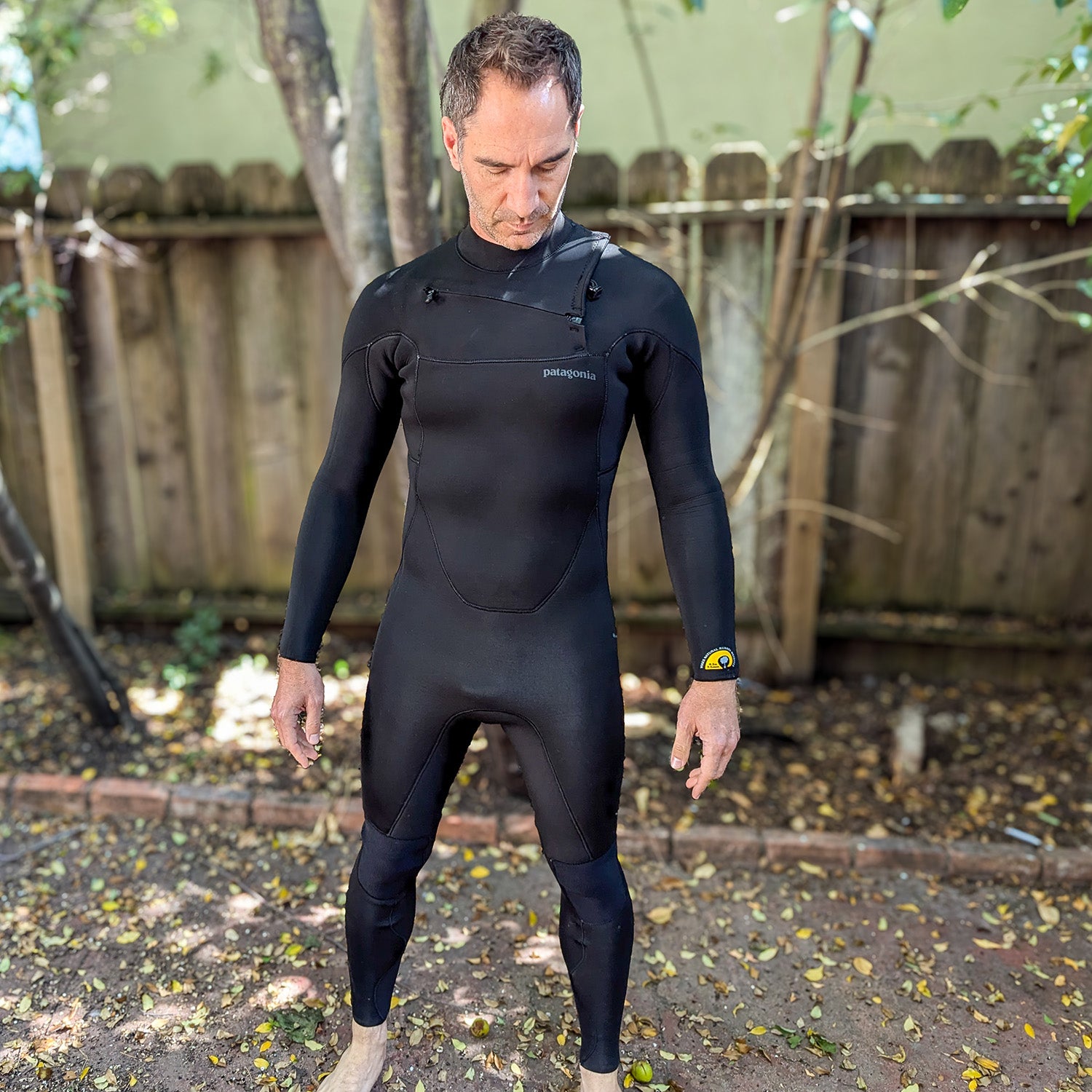For those of us who try to spend our dollars on more environmentally-friendly gear, there is an uncomfortable truth that we don’t like admitting: Sometimes, these products don’t perform as well as their planet-killing counterparts. Now, that’s not always the case, but too often we’re faced with a choice between performance and sustainability, and unfortunately, that has long been the case for wetsuits. As a surfer, I’m happy to report that the days of compromise are finally over. Patagonia’s new and improved Regulator wetsuit successfully blends performance and sustainability.
Patagonia, founded by California surfer and environmental activist Yvon Chouinard, has long sought to make wetsuits more eco-friendly by shirking traditional neoprene (traditionally derived from crude oil or limestone) in favor of more sustainable materials. Since 2012, the brand has been predominantly using Yulex, a brand name of natural rubber derived from the sap of sustainably-grown rubber trees, in its Regulator wetsuits.
While Yulex sounded great in theory, the performance has historically left much to be desired. I had a Regulator wetsuit from Patagonia’s previous generation, and it was noticeably stiffer than my traditional neoprene wetsuit. Every paddle stroke I took felt like I was pulling against a resistance band (albeit a light one). It also leaked at the seams in my lower legs, was tougher to get on and off, heavier, and dried slower, too.
The new version of Patagonia’s Regulator wetsuits solved effectively all of those problems. The company spent four years developing and testing the new suits (twice as long as its usual release schedule due to COVID-19 related slowdowns), and that extra time really paid off.
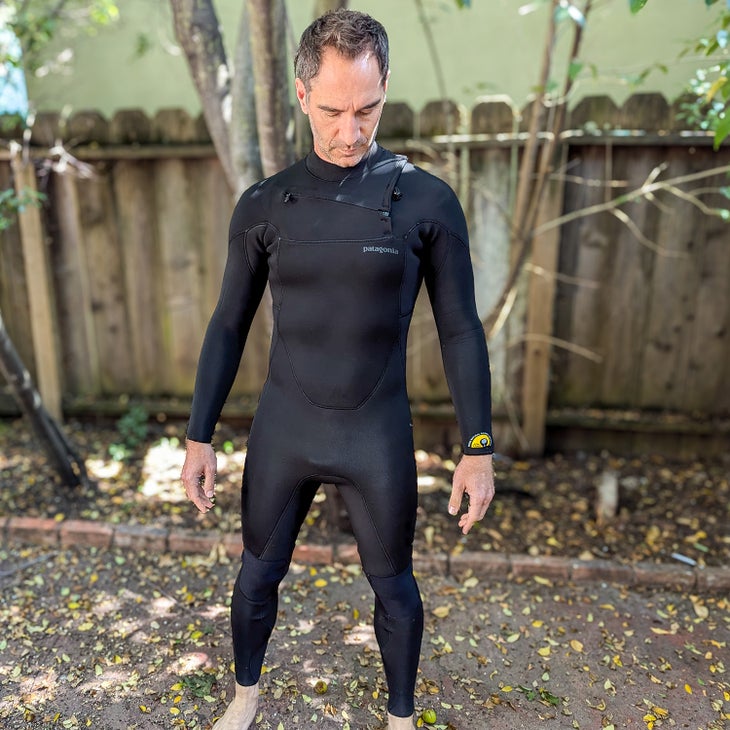
Patagonia Yulex Regulator Wetsuit
Available models: Lite (2 mm) to R5 (6.5 mm/5 mm), in front and back-zip options
Materials: 85% Yulex natural rubber plus recycled fabrics for jersey
Weight: 2.5 lbs (R1); 3.5 lbs for R3
Size range: Men’s S – XXL; Women’s 4-12
Pros and Cons:
⊕ Very flexible, warm, and comfortable
⊕ Improved seams don’t leak and are easily repaired
⊕ Dries quickly
⊕ One of the most eco-friendly wetsuits on the market
⊗ Issues with the zipper engaging
⊗ Issues with flushing and chafe around the neck
⊗ Limited range of sizes for women
When you buy through our links, we may earn an affiliate commission. This supports our mission to get more people active and outside. Learn more.
While Patagonia’s Regulator suits aren’t made entirely with natural rubber—no wetsuit today is—they do incorporate a new mix of 85 percent natural rubber, plus 15 percent of a processed synthetic rubber compound which gives the resulting foam enough stretch, strength, and UV-resistance to withstand the rigors of life as a wetsuit. Patagonia claims the newest version of these suits are 20-percent stretchier than the last. This is partially due to improvements in the foam rubber manufacturing process, and partially because the liners in the new suits have changed from nylon to polyester, with a slightly increased amount of Spandex, too.
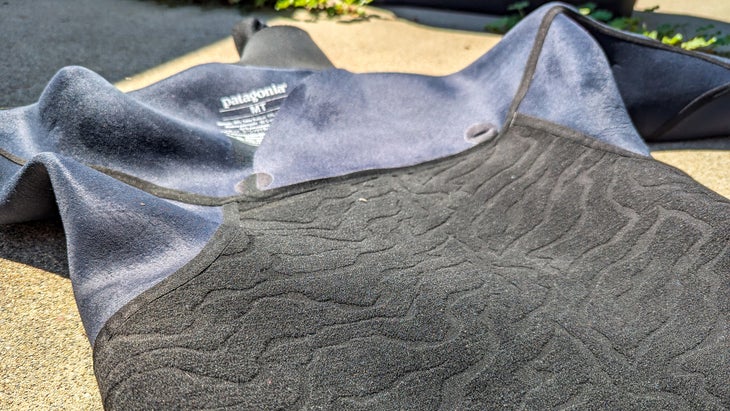
I compared the new R1 (what Patagonia calls its 3mm/2.5mm line) to the last version by grabbing the sleeves in the same place and pulling each to the same length. While not perfectly scientific, I would estimate that the new suits did indeed require roughly 20-percent less energy to stretch the same distance, and that puts them right on par with my traditional neoprene suits. Not only does that reduce fatigue while paddling, but it makes getting it on and off easier, too.
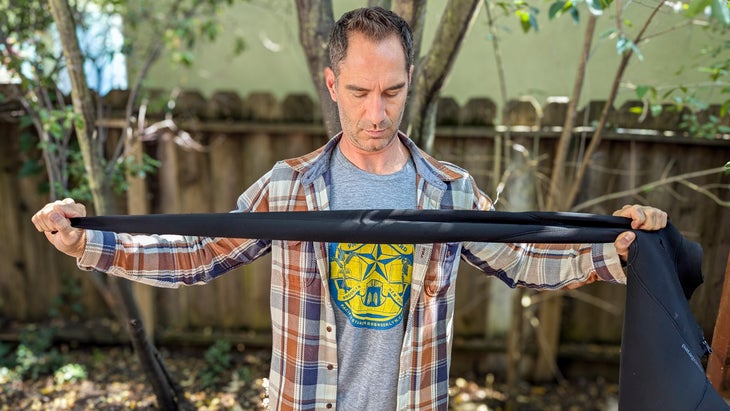
Patagonia also redesigned the seams to address the leaking issues in the previous model, moving them slightly from high-wear areas and adding more curves to them so there’s less stress on them when they’re stretched. This simple change has made the new version one of the least leaky wetsuits I’ve ever tested.
When seams do have to be repaired, the job is much easier now. Patagonia removed the external liquid seal in the new Regulator, which had a tendency to crack and wasn’t fully repairable, leaving the company to replace defective wetsuits more often. According to Patagonia, the number of repairs is down a whopping 70-percent year to date.
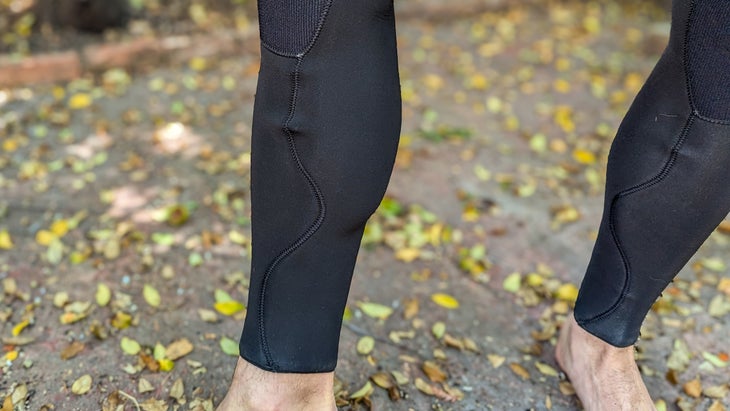
These are all massive improvements, but the new Regulator still doesn’t get perfect marks across the board. For starters, there’s the zipper. I got the chest-zip version of the suit in both R1 and R3 thicknesses, and for both it was really tough to get the zipper to initially engage properly. This is quite annoying when your hands are cold and the waves are firing. I also found that the neck chafed me a bit more than wetsuits normally do (which made me wonder if it was too tight), yet it was also slightly more prone to flushing at the neck (which made me wonder if it’s too loose). It’s possible that that’s just the way my specific neck fits with the wetsuit, and the chafing didn’t happen every session, but it’s something to note.
While the stretch is immensely improved from the last version, it still isn’t quite on the same level as the super-high-end performance suits out there. At least the ones built with flexibility as the main feature, such as line. That said, for everybody but pros, it is more than flexible enough.
Then there’s the price: These are still some of the most expensive suits on the market. The R1 Regulator (3mm/2.5mm) comes in at $479, while the R3 Regulator (4.5mm/3.5mm) starts at $539. That’s roughly comparable to the high-end offerings from other surf brands ( line comes in at $520 and $540 for comparable thicknesses), but those companies typically have more affordable entry-level suits for people who are just starting out or are on a tighter budget (often under $200), and Patagonia only has the one line.
Also, strangely, these suits are available in ten different sizes for men, but only five different sizes for women. That’s despite women generally having more variation in terms of body-type than men. So if women don’t happen to fit one of those five then they’ll have to look at other brands, which is a shame.
All that said, I wouldn’t hesitate to recommend the newest Regulator suits to fellow surfers. I spent most of the winter and spring surfing in the R3 then the R1 as it got warmer, logging over 40 days up and down the California coast in water temperatures ranging from 49 to 64 degrees F, and both have lived up to their claimed temperature ratings, performed well, and held up admirably. They’re very comfortable, don’t wear me out like the last version did, and they dry faster, too.
So yes, these wetsuits still cost a premium, but the performance finally lives up to the price, and they’re easier on the planet, too.


